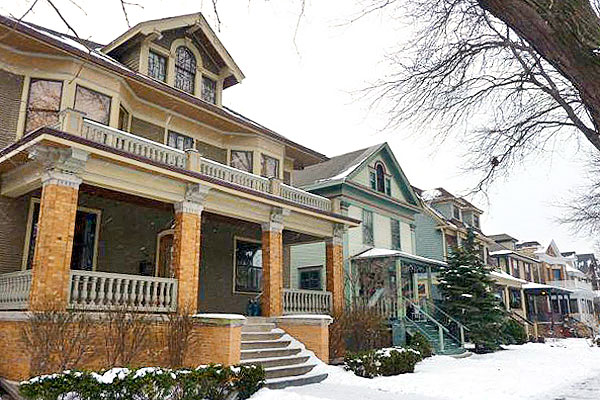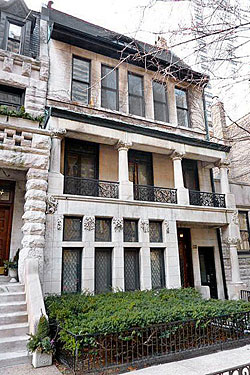
A Lakewood-Balmoral neighborhood
Sellers of vintage homes may be at a greater disadvantage now than during a healthy real-estate market. Homebuyers today are getting such great deals on new or recent construction—sometimes at rock-bottom foreclosure prices—that they don’t have to bother with taking on a house that needs some updating just to get a better price.
The solution, said Anne Rossley, a Prudential Rubloff agent who specializes in vintage homes, is to meet potential buyers halfway. If you can’t afford to upgrade before putting the house on the market, then provide an expert estimate of the time and money buyers will need for a potential rehab—and maybe even provide drawings or rough plans for work that needs to be done. “Buyers don’t see what the house could be,” Rossley said. “You have to help them.” She recommended having an architect draw up plans—informal or formal, depending on your budget—for taking down the wall between the kitchen and the parlor to create a great-room layout or roughing in the look of new top-floor dormers that help turn an attic into a master bedroom.

A historical Astor Street mansion
Another agent, Meladee Hughes of Sudler Sotheby’s, is offering just that kind of package for a historical mansion on Astor Street. Built in 1892, the four-story building was chopped up into apartments decades ago. A North Shore couple bought the house in the mid-1990s with plans to return it to single-family status. They did not get around to the project and put the house on the market last year, asking $3.395 million. The price includes plans drawn up by the now-retired architect Lucien Lagrange for turning the building—whose floor plan is now a confusing hodgepodge—into a grand mansion.
“You can’t walk through here and imagine what it would be like after it has been turned back around,” Hughes said as we walked up the narrow staircase to the apartments. Lagrange’s plans “help people envision the grandeur.” The plans call for replacing a boxy rear addition from the 1940s with a garage and a raised terrace and turning a paneled relic of what may have been the original dining room into a library. The conversion would cost a few million dollars, but Hughes noted that the home would still count as something of a bargain on a block where neighboring homes have gone for $13 million and $14 million.
Rossley lives in one of my favorite neighborhoods, Lakewood Balmoral, whose blocks are lined with handsome, sometimes fanciful vintage homes. Many have been updated in the past two decades, but those that haven’t, Rossley said, often suffer from “floor plan problems.” They may have small kitchens—relics of the days of servants doing all the cooking—or lack a family room or master bath. Those are features that buyers now expect to find in the price range occupied by most Lakewood-Balmoral homes (over $800,000 if not updated, and over $1 million if updated, Rossley said).
Rossley recently posted a blog about the long time the neighborhood’s vintage homes have been lingering on the market; one gorgeous Queen Anne that two years ago sold in just two days has now been on the market for over four months—even though it’s priced at 11 percent below its 2008 sale price. Buyers, Rossley told me, are finding that they can get into more sought-after neighborhoods (such as Lake View) because of price cuts. But even factoring in the cost of additions or upgrades, she thought that Lakewood-Balmoral homes still came out as better deals. “You just have to help the buyer see that,” she said.




Comments are closed.